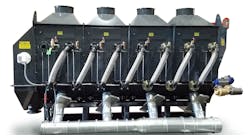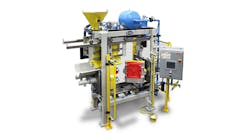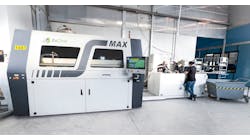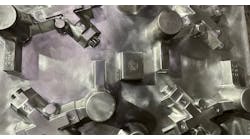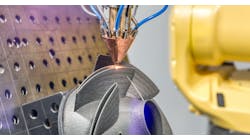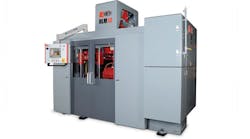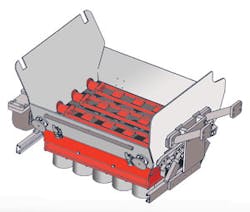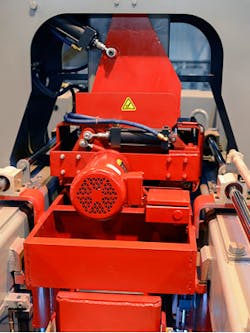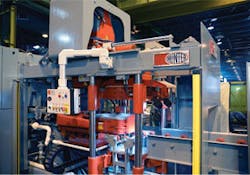Process innovations in metalcasting are comparatively rare: techniques that work well have staying power. Once it is widely established the improvements come in terms of “productivity” and “flexibility”, which is the line Hunter Foundry Machinery Corp. is pursuing with three developments it has introduced this year.
Possibly the most significant introduction is the HLM-10 molding machine: the company was established in 1964 on the basis of founder Al Hunter’s innovation in automated matchplate molding, and it has built and installed more than 1,800 molding machines and mold handling systems over subsequent decades. Now, according to company president and CEO Bill Hunter, the HLM-10 represents a new, proprietary concept in automated matchplate molding technology.
He said the HLM Series is the metalcasting industry’s first machine to integrate magnetically coupled rodless cylinders and linear bearings to move the squeeze platen, cope flask, sand measuring hopper and other components on the machine.
Formerly, the movements within automated matchplate machines involved cam followers, wheels, tracks, rails, and other mechanical parts that are subject to wear and require maintenance or replacement. But, Bill Hunter noted, “the HLM’s sealed linear motion slides and magnetic rodless cylinders replace these older components, to provide smoother, quieter and more energy-efficient operation with less maintenance and greater machine stability.”
He emphasized the new design would improve productivity for the automated matchplate molding process.
Another notable arrival from Hunter is the JetSlinger™ — described as an optional “air-amplification” device for the HLM-10 (or as a retrofit to other matchplate machines), to improve pattern definition, mold hardness, and surface integrity.
Based on the Venturi principle, JetSlinger accelerates sand delivery into the cope and drag flasks. By creating a vacuum and jet exhaust that draws sand through a series of nozzles built into a manifold, it shoots sand into the cope and drag flasks. The result is perpendicular flask filling, with no “shadow effect.” In addition to better pattern definition, mold productivity is increased.
“In contrast to the conventional blow-fill machines, there is no shroud, seals or vented flask assemblies, nor is the usual attendant maintenance required,” according to Bill Hunter, who invented and patented the device. “Furthermore, JetSlinger allows foundries far greater flexibility, as well as the access needed to produce various castings with the use of chaplets, ram-up cores and exothermic risers.”
The third introduction by Hunter is the CESAR “vacuum pattern spray recovery” system: the acronym is for “Contain, Evacuate, Separate And Recover,” and the purpose is to optimize the spraying of release agents in sand molding operations.
Most molding machine designs locate a spray head in the sand filling station and a spray evacuation device near the rotary cradle or the spray head. Spray is dispensed onto the pattern plate as it enters the rotary cradle, but excess spray will cover other parts of the machine and escape into the plant atmosphere.
The system makes the molding process cleaner and safer, as well as more economical —which is all part of making the process more productive.




